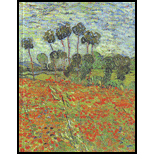
To describe: The structure of the shoot apical meristem of
Introduction: Angiosperms are the flowering plants that make up the phylum Anthophyta that includes possibly as many as 450000 species. It is considered as the largest phylum of photosynthetic plants.
Explanation of Solution
In the shoot apical meristem of the angiosperms, the corpus and the parts of the tunica layers over the corpus form the central zone, which is related to the promeristem of the shoot apical meristem. The central zone is surrounded by the peripheral meristem or peripheral zone that forms partly from the tunica and from the corpus. Peripheral zone forms a three-dimensionally ring around the central zone. In this way, the central zone is analogous to the quiescent center of the root apical meristem.
To determine: The relationship between the zones of the shoot apical meristem and the primary meristems of the shoot.
Introduction: Most of the plant development takes place after the process of embryogenesis through the activity of meristems. With the seed germination, the apical, shoot, and root meristems of embryo produce cells that give rise to the stems, roots, leaves, and flowers of the plant.
Explanation of Solution
The protoderm normally forms from the outermost tunica layer, whereas the procambium and part of the ground meristem is formed from the peripheral meristem. The pith meristem forms the remaining portion of the ground meristem. Although the primary tissues of the stem undergo the periods of growth similar to those of the root, the stem does not divide along its axis into the regions of elongation, cell division, and maturation as in the roots. When actively growing, the shoot apical meristem gives rise to the leaf primordia in such sudden succession that internodes and nodes cannot be early distinguished.
Want to see more full solutions like this?
 Human Anatomy & Physiology (11th Edition)BiologyISBN:9780134580999Author:Elaine N. Marieb, Katja N. HoehnPublisher:PEARSON
Human Anatomy & Physiology (11th Edition)BiologyISBN:9780134580999Author:Elaine N. Marieb, Katja N. HoehnPublisher:PEARSON Biology 2eBiologyISBN:9781947172517Author:Matthew Douglas, Jung Choi, Mary Ann ClarkPublisher:OpenStax
Biology 2eBiologyISBN:9781947172517Author:Matthew Douglas, Jung Choi, Mary Ann ClarkPublisher:OpenStax Anatomy & PhysiologyBiologyISBN:9781259398629Author:McKinley, Michael P., O'loughlin, Valerie Dean, Bidle, Theresa StouterPublisher:Mcgraw Hill Education,
Anatomy & PhysiologyBiologyISBN:9781259398629Author:McKinley, Michael P., O'loughlin, Valerie Dean, Bidle, Theresa StouterPublisher:Mcgraw Hill Education, Molecular Biology of the Cell (Sixth Edition)BiologyISBN:9780815344322Author:Bruce Alberts, Alexander D. Johnson, Julian Lewis, David Morgan, Martin Raff, Keith Roberts, Peter WalterPublisher:W. W. Norton & Company
Molecular Biology of the Cell (Sixth Edition)BiologyISBN:9780815344322Author:Bruce Alberts, Alexander D. Johnson, Julian Lewis, David Morgan, Martin Raff, Keith Roberts, Peter WalterPublisher:W. W. Norton & Company Laboratory Manual For Human Anatomy & PhysiologyBiologyISBN:9781260159363Author:Martin, Terry R., Prentice-craver, CynthiaPublisher:McGraw-Hill Publishing Co.
Laboratory Manual For Human Anatomy & PhysiologyBiologyISBN:9781260159363Author:Martin, Terry R., Prentice-craver, CynthiaPublisher:McGraw-Hill Publishing Co. Inquiry Into Life (16th Edition)BiologyISBN:9781260231700Author:Sylvia S. Mader, Michael WindelspechtPublisher:McGraw Hill Education
Inquiry Into Life (16th Edition)BiologyISBN:9781260231700Author:Sylvia S. Mader, Michael WindelspechtPublisher:McGraw Hill Education





